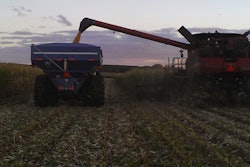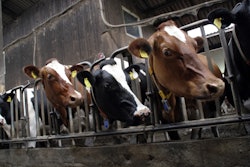In January 2011, President Barrack Obama signed into law the most significant regulatory overhaul the food and feed industries have seen in several decades — the Food Safety Modernization Act (FSMA).
The law intends to preserve the safety of U.S. food by requiring most food facilities to identify and control potential threats at their operations to prevent contamination of the supply chain. In addition to identifying hazards, a key component of the law is its requirement for companies to have a written plan in place to take the necessary corrective actions, including voluntary recalls.
It’s easy to see how FSMA affects food and feed companies because of their direct connection to food distribution, but there’s more gray area surrounding its impact on the grain handling industry, since many don’t consider grain elevators to be food production operations.
According to the Federal Food, Drug & Cosmetic Act, anything intended for man or animal consumption is defined as food, which means the law applies to grain elevators, feed and feed ingredient and pet food manufacturers, grain processors, biofuels producers manufacturing co-products for use as feed, and exporters of grains, feed, ingredients and processed commodities.
However, the Food and Drug Administration (FDA) — the federal agency that oversees FSMA — has proposed that facilities that simply “hold” grain be exempt from certain rules to be issued under this multi-part law. Those proposed exemptions, combined with the long-held belief that the grain industry is removed from the food industry, is why confusion still exists.
“Our industry members have always understood they have a responsibility to distribute safe grain,” said David Fairfield, vice president of feed services, National Grain and Feed Association (NGFA). “However, because of FSMA and other business-related factors, there are growing expectations that grain companies be able to demonstrate their food safety practices in a more formal manner.”
As a vital link in the food chain, FSMA will have a profound effect on the grain handling industry and its operations.
What to expect from inspections
Grain elevator operators can expect additional FDA inspections because of FSMA. The FDA already had existing authority to inspect grain facilities, but FSMA mandates that all food facilities required to be registered under the Bioterrorism Act of 2002 be inspected at prescribed frequencies.
“I get a lot of calls from grain elevators who are experiencing an FDA inspection for the first time,” said Fairfield. “The grain industry’s not that familiar with FDA investigators, and hasn’t had much experience interacting with them, so this is a new game in town.”
If the FDA has never inspected a facility, that’s a sign it’s due for one.
“There is a built-in inspection frequency within FSMA which requires FDA to inspect all food facilities that are registered,” said Fairfield. “Under the current mandate in terms of inspectional priorities, if a facility has never been inspected before, it rises to the top of the list.”
After initial inspection, facilities can expect subsequent inspections every five to seven years.
Grain elevators can do a lot to prepare for an FDA inspection, but companies should start by paying close attention to facility sanitation. Inspectors (referred to as investigators by FDA) want to see good housekeeping, ample pest control and grain stored in a way to minimize the potential for adulteration.
Company policies on how to handle an inspection should be established well before an investigator arrives as they can occur at any time during normal business hours without notice.
In a guidance document titled “Rights and Obligations During FDA Inspections,” NGFA recommends developing a comprehensive plan for inspections that anticipates “the scope of the inspection, questions that may be asked, how to handle requests for copies of records and policies, etc. In addition, the plan should outline the responsibilities that individuals within the facility will have during the inspection.”
According to the guidance document, a facility inspection plan should include:
1. Protocol for the first point of contact with the investigator, which includes:
- Having the investigator sign the visitor log
- Offering beverages and access to restroom facilities
- Escorting the investigator to a designated place until the assigned facility representative is available
- Knowing who to contact when the investigator arrives
- A designated facility representative and a backup to guide the FDA investigator’s tour, who should:
- Know the company and its operations well
- Not be a senior company official
- Inform the investigator of all relevant visitor and safety policies for the facility
- Remain with the investigator throughout the tour
2. Requirements of the investigator, stating that he or she should:
- Present a badge and FDA credentials upon arrival
- The facility has a right not to allow the inspection to proceed without these
- Present a Notice of Inspection (Form FDA 482) for the facility to keep on file
- State the purpose of the visit and/or inspection
- Wear the facility’s required PPE (personal protective equipment)
3. Policies for handling investigator requests during the inspection, including:
- Whether to allow employee interviews
- Companies may want to instill a policy that directs all questions to the designated facility representative instead of allowing individual employee interviews. If so, state the policy at the beginning of the tour.
- Records the investigator is allowed to see and copy
- FDA authority gives investigators access to records associated with the Reportable Food Registry reports and notifications and records pertaining to the manufacture, processing, packing, distribution, receipt, storage or importation of such food
4. Records the investigator is not allowed to see and copy, such as:
- Recipes/formulas
- Financial data
- Pricing data
- Personnel data
- Research data
- Sales data other than shipment data regarding sales
- Taking pictures, product samples and signing affidavits
5. Policies for after the inspection, including how to:
- Conduct an inspection exit interview
- Compile and organize an inspection file and present it to management
- Respond to any official letters that are sent as a result of the inspection
For more details on what to expect during an FDA inspection, go to www.ngfa.org/wp-content/uploads/Rights-and-Obligations-During-FDA-Inspections.pdf.
Beyond that, it is important to know which FSMA rules a facility is subject to, as each poses specific requirements. The table on pg. 41 lists the rules relevant to the feed and grain industries and which types of facilities are proposed to be covered.
Significant FDA requirements
FDA has proposed that grain elevators that solely “hold” grain be exempt from following the CGMPs and preventive controls for human food, animal feed and pet food, but the agency has not proposed they be exempt from other key FSMA rules.
One of the more significant rules grain elevators will likely be subject to is the sanitary transportation of food/feed/grain. One provision in the proposed rule states that a shipper and transporter would need to share information about the last three loads on a given conveyance as part of normal business practices, unless that requirement is modified by agreement between the shipper and carrier.
Industry stakeholders, including NGFA, submitted comments to FDA seeking to ease this requirement because there’s no evidence the current practice of tracking only the last load hauled poses any risk.
“We hope that FDA will provide more flexibility than they did within their proposed requirements for the sanitary transportation rule,” Fairfield explained. “We don’t think several of the requirements proposed are realistic or practical and they don’t reflect how the industry works.”
FDA’s final rule on transportation is due in March 2016, and Fairfield anticipates FDA will meet the industry’s requests to some degree.
Grain elevators also will likely need to comply with FSMA’s Foreign Supplier Verification Programs (FSVP).
“It will be the responsibility of the importing party of that food to ensure that that supplier is compliant with all aspects of the Food Safety Modernization Act,” said Matt Frederking, vice president of regulatory affairs and quality for Ralco and frequent FSMA topic speaker at feed and grain industry events nationwide.
To facilitate this requirement, FDA has proposed to allow importers to rely on qualified individuals to audit the food safety practices of foreign food facilities. Frederking noted the importance of retaining verification and other records in an orderly form, so they can be presented and/or communicated to an external regulatory body, customer base or supplier.
Supply chain requirements
FSMA is having a rippling effect throughout the supply chain. Food and feed companies that grain handlers do business with may require their suppliers to comply with certain FSMA rules, such as the current good manufacturing practices and the hazard analysis risk-based preventive controls, even if they are exempt by the FDA.
“A fair number of [grain elevators] should expect to receive supplier verification documents from their customer base stating the requirements for selling to that customer,” said Frederking.
There’s no question that grain elevators will have to demonstrate their safety practices and procedures more frequently on a contractual basis. It beckons the question: Is the industry prepared for this shift?
“Many members of the grain industry are well prepared and are ready to embrace this concept within the supply chain, but some firms will need to take steps to further document their food safety practices,” Frederking stated. “Supply chain management is becoming more of a focus throughout the entire food system. In the future, grain elevators will see more customer requests for documentation on how they are addressing food safety concerns within their operations.”
Grain handlers must begin preparing to do more in the area of food safety than ever before. Supply chain requirements already are holding the grain industry to a higher safety standard, while FDA officials are looking for such protections in accordance with FSMA. While stakeholders continue to communicate with FDA officials to ensure that FSMA’s final rules will not be unnecessarily burdensome to the industry, there’s no reason to wait to take an active role in protecting our domestic food supply.


















